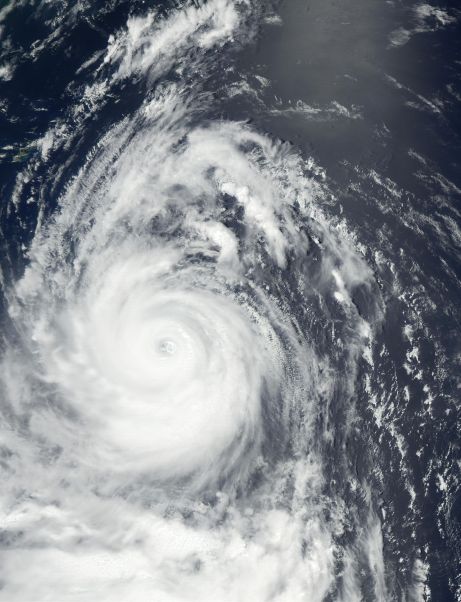
(NASA/MODIS)
Over the period of June 27-July 2, 2002, a developing tropical system, later to become Super Typhoon Chataan, dumped heavy rains on the Federated States of Micronesia (FSM) causing the deadliest natural disaster in the history of the Chuuk Islands (previously known as the Truk Islands).
The disturbance formed from a monsoonal trough that had persisted over the western Pacific for several days. The system moved little as it slowly organized in the vicinity of FSM. This meant that its tropical rains fell continuously for several days, inundating Chuuk and Pohnpei. A 24-hour record was reached for the islands when 506 mm (19.9 in) was recorded in one day. The rains caused flash floods and landslides, which claimed 48 lives.
The storm remained under the influence of the monsoon trough until July 2nd, when it began to meander northwestward toward Guam. It slowly strengthened as it approached that island, becoming a typhoon before brushing over the northern part of Guam early on July 5th. Independence Day celebrations were cancelled due to Chataan as the island was raked by 100 mph (170 km/hr) winds and inundated with over 10″ (265 mm) of rain. It then struck Rota to the north with hurricane-force winds.
The typhoon began to move more quickly to the northwest and to intensify. Its maximum sustained winds reached a peak of 150 mph (240 km/hr) on July 8th as the storm track turned northward toward Japan. Before it reached the Home Islands, Chataan weakened to a tropical storm and recurved to the northeast, brushing the coast of Honshu. It dumped more tropical rain on Japan, up to 20″ (510 mm), which destroyed homes and caused six deaths. Chataan dissipated after passing the island.
Along its path, the typhoon caused over 50 deaths and resulted in US$660 million in damage.